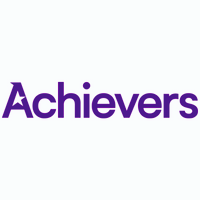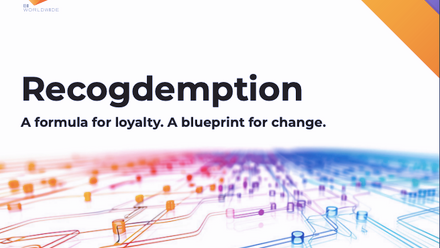7 ways to make recognition meaningful across different cultures
People leaders are increasingly turning to recognition as a way to overcome stagnant productivity. Far from being a “feel-good” extra, recognition is a driving factor in productivity growth.
Organisations where at least half of all employees reported receiving recognition in the last week experienced a 9 per cent improvement in productivity and a 22% decline in absenteeism.
When it comes to recognising multicultural teams, management faces multifaceted problems. For people leaders, the greatest challenge is balancing cultural differences with unified organisational values. They need to build trust with teams across borders and recognise achievements in ways that will resonate with everyone.
A simple thank-you has a powerful impact, but recognition for multicultural teams requires tact, testing, and understanding. Different cultures have different ways of showing gratitude and accepting appreciation. When you have a multicultural team, how do you balance cultural nuance and your core message?
1. Why cultural context matters in recognition
Recognition doesn’t exist in a vacuum - cultural norms shape what people value and how they want to be appreciated. What feels authentic in one country may fall flat or even offend in another.
A study by psychologist Paul White highlights how cultural groups interpret recognition differently. Words of affirmation top the list for employees who speak Chinese (55%) or Brazilian Portuguese (62%), while quality time resonates more with Spanish (35%) and Danish (33%) speakers. Yet only 8% of Chinese-speaking employees considered quality time appropriate.
This suggests that recognition must fit cultural expectations to build trust rather than erode it.
- Words of affirmation: Highly valued in China and Brazil
- Quality time: Resonates in Spain and Denmark
- Missteps: Lunch with a mentor could feel rewarding - or awkward
2. Start with your company values, not assumptions
Recognition should be guided by company values, not stereotypes about employees in different cultures.
Defining values such as “celebrating contributions” provides a consistent foundation, while cultural understanding ensures those values are expressed respectfully.
The goal is balance: stay true to your organisation’s purpose while adapting the delivery to resonate across borders. A rigid approach risks alienation, but a values-first model allows flexibility without losing focus.
Recognition anchored in shared principles makes it easier to align teams globally, even if the methods look different from place to place.
- Example value: “Celebrating contributions”
- Adaptation: Could mean peer-to-peer notes, mentorship, or team shoutouts
- Key takeaway: Values provide consistency, while cultural tailoring ensures impact
3. Ask, don’t assume: Leverage local insights
The most effective recognition strategies are informed by employees themselves. Instead of assuming what will resonate, seek input from local managers, HR leads, and cultural champions.
Employee surveys and focus groups can reveal preferences around rewards, tone, and delivery. Testing ideas with small groups helps avoid missteps and build credibility.
This consultative approach not only sharpens strategy but also signals respect for employee voices. The outcome is one of recognition that feels personal and not prescriptive.
- Ask: What recognition types resonate most locally?
- Clarify: Are public shoutouts encouraged - or uncomfortable?
- Explore: Do employees prefer notes, monetary rewards, or experiences?
- Involve: Use local champions to refine before rollout
4. Adapt delivery methods, not the message
Recognition has a universal message - “You are valued” — but the way that message is delivered should flex.
Employees in different cultures vary in their comfort with public vs. private praise, written vs. spoken thanks, or formal vs. casual expressions. While the underlying recognition remains constant, its tone, format, and setting should reflect cultural and personal preferences.
Giving employees a choice in how they receive recognition ensures it feels authentic rather than awkward. This flexibility strengthens impact without diluting the meaning.
- Written recognition: Favored in cultures valuing formality
- Public shoutouts: Effective in team-oriented environments
- Private thanks: Better for those uncomfortable with attention
- Best practice: Offer options so employees can choose
5. Be inclusive with reward options
Recognition loses its value if rewards are irrelevant or inaccessible.
A global workforce requires flexible, localised options that avoid cultural missteps and logistical barriers. Gift cards, experiences, or donations popular in one country may be impractical elsewhere, while tax implications can further complicate choices.
Offering a range of meaningful, localised rewards ensures inclusion and avoids alienating employees. Cultural sensitivity matters just as much as logistical feasibility.
- Localised options: Retailers, experiences, and charities tailored to each region
- Personalisation: Rewards that feel more meaningful for each employee
- Currency and tax clarity: Transparency across regions to avoid confusion
- Cultural awareness: Avoid inappropriate items, colours, or alcohol
6. Build a shared recognition language
Consistency matters: recognition should highlight why someone is appreciated, not just what they receive.
Creating a shared recognition language across cultures helps employees understand the connection between recognition and values-driven behaviours.
Public recognition reinforces desired actions across the team, while private recognition deepens individual engagement. By naming behaviours - such as innovation, teamwork, or impact - organisations create clarity, prevent misinterpretation, and amplify outcomes.
Recognition becomes not just a transaction but a cultural signal of what matters most.
- Consistent categories: Recognition tied to innovation, teamwork, and impact
- Company alignment: Linking recognition directly to organisational values
- Behaviour reinforcement: Encouraging actions that strengthen team o
- Clear communication: Ensuring recognition is understood across cultures
7. Train leaders to lead with cultural intelligence
Leaders carry the greatest influence in recognition, but cultural intelligence determines their effectiveness.
A recognition message can succeed or fail depending on its tone, timing, and sensitivity to cultural nuance. HR can equip leaders with training to avoid unconscious bias, adapt recognition delivery, and use empathy as a leadership tool.
When leaders model recognition well, it cascades across teams and shapes culture.
Ultimately, recognition isn’t just a programme - it’s a leadership responsibility that requires skill and awareness.
- Tone and timing: Training leaders on when and how to recognise effectively
- Bias reduction: Guidance to help minimise unconscious bias
- Empathy and curiosity: Emphasising these traits in leadership practice
- Leadership mindset: Leaders set the tone — recognition is more than a task
One culture of recognition, many ways to express it
Meaningful recognition comes from marrying cultural awareness with consistent company values.
When done well, recognition deepens connections between employees and organisations, builds trust, and boosts engagement globally.
Supplied by REBA Associate Member, Achievers
Achievers is an enterprise Recognition and Reward software with non-monetary and monetary recognition and a global reward marketplace.








